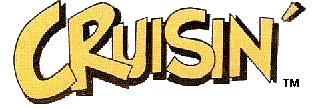|
The Cruisin' Years
New Label: Increase,
New Concept: CRUISIN'
cruisin' (krew'-zin) v. Teen-
age custom of driving
around, primarily to listen
to pop music stations on the
car radio, while observing
other kids and cars doing
the same thing; popular all
over the United States be-
ginning in the mid-Fifties.
The word cruisin' doesn't appear in the dictionary, but it's a familiar word to millions of people who did it. The new seven-record series on Increase Records, CRUISIN' THE FIFTIES AND SIXTIES, is a year-by-year recreation of pop music radio during the years 1956 through 1962.
Each album is not just a collection of the top pop music of a particular year, but a total recreation by a top disk jockey (of that year) doing his original program over a major pop music station. That means actual commercials, promotional jingles, sound effects, newscast simulations and even record hop announcements in addition to the original records themselves.
The series was produced with unprecedented attention to detail. One disk jockey, Dick Biondi of Chicago, called his old home town, Buffalo, New York, just to get an accurate ten-year-old weather report. Another, Arnie "Woo Woo" Ginsburg of Boston, showed up in the studio carrying a suitcase full of chrome kazoos, cowbells, oogah horns and other noisemakers he'd used on the air in 1961. Then, after laying them out on a towel by the mike, much like a brain surgeon preparing to operate, "Woo Woo" wailed.
CRUISIN' producer Ron Jacobs monitored thousands of feet of tape, travelled over 10,000 miles and rooted through forgotten files and cluttered basements for old commercials, station promos and jingles. He also managed to get clearances for 84 different records, of which 42 are certified million-sellers, and all are from the Top 30 of their respective years.
The disk jockeys who appear on the series were picked after a month of carefully researching a decade's issues of BILLBOARD, including tabulating all disk jockey mentions. The names were then cross checked with audience rating services and longtime radio expert Bill Gavin--all this just to determine with jocks on which stations represented each year most accurately.
Once all the material had been collected, weeks were spent in the studio carefully integrating almost 1,000 seperate cues, and timing each year's "radio program" so it could be mastered for tape in four exactly equal parts. This was done to eliminate any dead space on CRUISIN' cassettes and cartridges, making each "rebroadcast" as realistic as possible and similar to the "tracking" effects of records. CRUISIN' was, in fact, originally conceived as a tape project: the first major one in the industry. After all, cruisin' meant cars, and listening to rock stations on the car radio; not until the enormous growth of in-car tape equipment was anyone able to recreate not only the sound of yesterday but the environment where the sound was first heard. Says Jacobs: "The full impact of such originally American social, technological, artistic and economic influences as rock and roll and Top 40 radio may not be fully realized in this century. But regardless of what time will ultimately be required to allow full historic perspective, there is the obligation to preserve the material so the media itself, not just written reviews and descriptions, will exist for future analysis.
"This isn't just nostalgia. It's history!"
Increase Records' CRUISIN' series is available on records and tape cassettes and cartridges, and is distributed by Chess Records (disc) and by the GRT Corporation (tape).
7 of The All-Time Top 20 Rock Jox
The seven disc jockeys in the CRUISIN' series were selected as the best living representatives of Fifties and Sixties radio from seven top American radio cities. 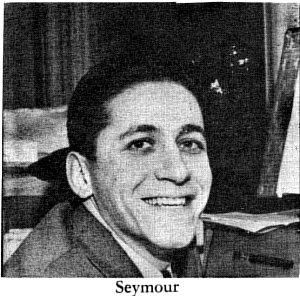
Recreating one of his old radio shows from 1956 is Robin Seymour, who then was with WKMH in Dearborn, Michigan. He had come to this suburban Detroit station from Armed Forces Radio and soon his warm, confidential tone had won him teenagers and housewives alike. His BOBBIN' WITH ROBIN show was the reason BILLBOARD named him Disk Jockey of the Year in 1953, and HIT PARADER magazine did the same in 1954. Today he's in television and concert promotion in Detroit.
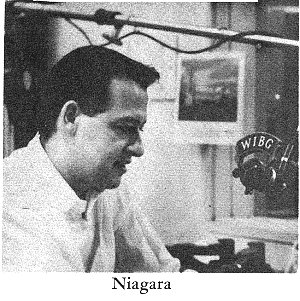
In 1957 it was Joe Niagara, top jock in "Wibbageland," the greater Philadelphia area within range of "Radio 99." He had been raised in South Philly (birthplace of Mario Lanza and Joey Bishop) and had come to WIBG in 1947 from service in the Panama Canal Zone. In terms of style, he is generally regarded as one of the nation's most influential deejays, a title he continues to wear at WIBG today.
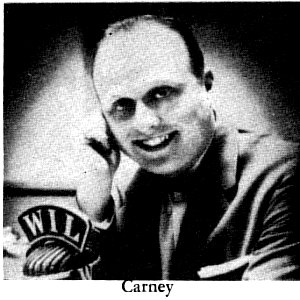
Jack Carney was one of radio's gypsies before he settled in St. Louis in 1958 at WIL. This is where he made his mark in Top 40, concocting bizarre stunts that appealed to so many (mainly teenagers) his station went from number seven in a seven-station city to number one in six weeks. Today he's in his eighth year at KSFO in San Francisco.
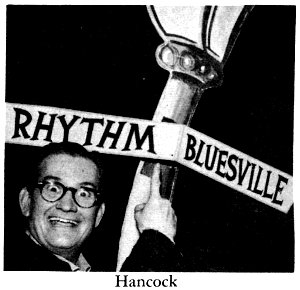
In 1959 it was Hunter Hancock, the excitable and often corny host of HUNTIN' WITH HUNTER on KGFJ in Los Angeles. The odd thing about his show, which was aimed at Southern California's Negro population, was Hancock wasn't black; he never said he was, but no one ever suspected he wasn't. He retired from radio a few years ago, and is presently associated with WESTERN OUTDOOR NEWS in public relations and field circulation work.
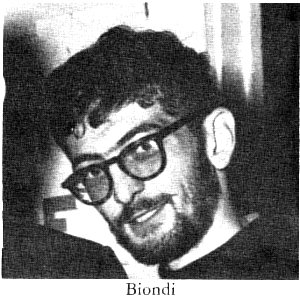
Dick Biondi, the "wild Eye-Tralian," "the supersonic spaghetti slurper" (his descriptions), is the jock for 1960. He was screaming over seventeen states that year from WKBW in Buffalo, New York, and following top-rated runs at KRLA, Los Angeles and on the Mutual Network, his powerful lungs have since become an institution at WCFL in Chicago.
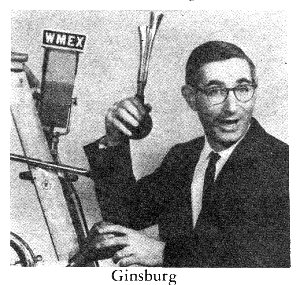
In 1961, Arnie "Woo Woo" Ginsburg was engineering the NIGHT TRAIN show on Boston's WMEX. (It was trains going "woo woo" in the night which gave him his nickname.) For twelve years, from 1956 to 1967, he was Boston's top disk jockey. Today he's in sales at WRKO in the same city and also is active in commercial production and voicing.
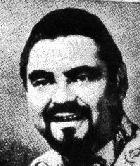
Production techniques had reached some sort of zenith in kitsch artistry by 1962 and Russ "Weird Beard" Knight, then at KLIF in Dallas, was perfectly suited. He had a graduate degree in journalism, but it was buried during this period--buried in sound effects, echo and rhyme. Knight is now Program Consultant for WCUE in Akron, Ohio.
The Man and The Company 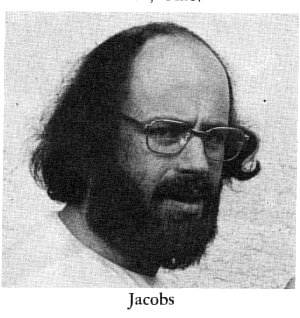
The man, Ron Jacobs, and Increase Records' parent company, Watermark, are uniquely suited for the recorded pop music radio series called CRUISIN'.
CRUISIN' is a year-by-year recreation of Top 40 radio from 1956 to 1962; not only was Jacobs active in pop radio during this period, he was also the producer of the highly acclaimed THE HISTORY OF ROCK AND ROLL. Watermark, a corporation he serves as an officer, is an entertainment and media organization that has no equal or precedent.
Jacobs recently concluded a four-year career as program director of KHJ in Los Angeles, a station he brought from its near-the-basement position to the top in just five months, where it remained so long as he was in charge. It was while in this position he produced the 48-hour long "rockumentary," a program which has been syndicated over much of the world and has been included in many museums and libraries, including the Library of Congress, the Lincoln Center for the Performing Arts and Julliard School of Music.
Jacobs was a 12-year veteran of radio when he came to KHJ in 1965. In Hawaii he had been the island's top disk jockey and later was a programming and production executive responsible for launching a number of top-rated stations in Hawaii and on "the mainland."
Then, believing there should be a healthy environment for people who'd been successful on traditional terms, an organization where such people could create freely, Jacobs left radio in 1969 to help found one--Watermark. Today this company has interests in concert and festival promotion (Arena Associates), radio programming (AMERICAN TOP 40), records (Increase), tape production (THE CASETTE GAZETTE), audio commercials (such as EASY RIDER) and program consultation (National General).
Peg & Eddie
To have a cover concept as unique as the content of the CRUISIN' series, it was decided to take a young couple and age them (in comic strip frames) through each year, noting carefully the changes in dress and hair styles, as well as social attitudes.
Thus, Peg graduates from a Fifties pony tail to a Sixties Jackie Kennedy bouffant/flip... while Eddie lets his flat top grow out. There's an Edsel on one cover (1957) and Alfred Hitchcock's PSYCHO is on a marquee of the drive-in on another (1960). On a third cover, regular gasoline is priced at under twenty cents (Eddie was pumping gas that year, 1958) and Eddie's friend is wearing a WE SHALL OVERCOME button on a fourth (1962).
Peg and Eddie and their world--our world-- were created by Jere Alan Brian, Increase Records vice president, and Paul Gruwell, Increase art director.
"Peg and Eddie became real characters to us," says Gruwell. "We know even more about them than the artwork indicates."
Gruwell was an animation layout man at Hanna-Barbera working on the HUCK FINN, SCOOBY DOO, THE THREE MUSKETEERS and FANTASTIC FOUR TV shows before joining Increase. Mike Royer, who did the cover art, is one of the men behind the TARZAN comic strip.
THE CRUISIN' SERIES
1. CRUISIN' 1956 (INCM-2001) Robin Seymour, WKMH, Detroit (3:29)
Theme & Show open; ROLL OVER BEETHOVEN-- CHUCK BERRY; Recommended record store plug.
2. CRUISIN' 1957 (INCM-2002) Joe Niagara, WIBG, Philadelphia (7:01)
Theme & Show open; SUZIE Q--DALE HAWKINS; Live Muntz T.V. Spot; HAPPY, HAPPY BIRTHDAY BABY--THE TUNEWEAVERS; Gelatin Plus Spot; WIBG Jingle; Rayco Spot,
3. CRUISIN' 1958 (INCM-2003) Jack Carney, WIL, St. Louis (7:29)
Theme & Show open; AT THE HOP--DANNY & THE JUNIORS; WIL Back To School Contest; #1 Song
Jingle; TEQUILA--THE CHAMPS; 1958 Mercury Spot.
4. CRUISIN' 1959 (INCM-2004) Hunter Hancock, KGFJ, Los Angeles (5:46)
Theme & Show Open; (BABY) HULLY GULLY--THE OLYMPICS; Jordan High Record Hop Plug.
5. CRUISIN' 1960 (INCM-2005) Dick Biondi, WKBW, Buffalo (7:27)
Theme & Show Open; YOU TALK TOO MUCH--JOE JONES; 1960 Studebaker Lark Spot; St. Mary's Record Hop Plug; TEARS ON MY PILLOW--LITTLE ANTHONY; WKBW Weather Promo.
6. CRUISIN' 1961 (INCM-2006) Arnie "Woo Woo" Ginsburg, WMEX, Boston (7:40)
Theme & Show open; BLUE MOON--THE MARCELS; WMEX Tower of Talent Promo; MY TRUE STORY--THE JIVE FIVE; Adventure Car Hop Spot.
7. CRUISIN' 1962 (INCM-2007) Russ "Weird Beard" Knight, KLIF, Dallas (7:30)
KLIF News Headlines; Theme & Show Open; PEPPERMINT TWIST--JOEY DEE; Live Record Intro; SOLDIER BOY--THE SHIRELLES; KLIF Summer Spectacular Promo.
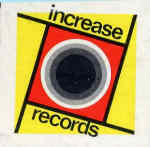
©1970 Increase Records.




















The CRUISIN' Series, A History of Rock 'n Roll Radio was conceived, created and produced by RON JACOBS, and originally issued on INCREASE RECORDS, a division of WATERMARK, INC. as well as on GRT Tapes.

What else did Watermark do? Click this logo and be amazed. | 